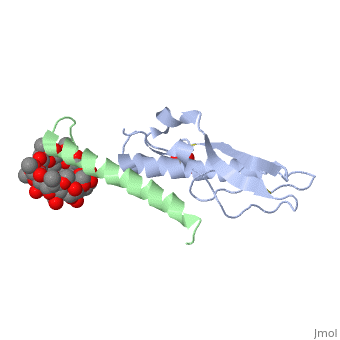Sandbox Reserved 384
| This Sandbox is Reserved from September 14, 2021, through May 31, 2022, for use in the class Introduction to Biochemistry taught by User:John Means at the University of Rio Grande, Rio Grande, OH, USA. This reservation includes 5 reserved sandboxes (Sandbox Reserved 1590 through Sandbox Reserved 1594). |
To get started:
More help: Help:Editing. For an example of a student Proteopedia page, please see Photosystem II, Tetanospasmin, or Guanine riboswitch. |
|
Glucose-dependent Insulinotropic Polypeptide ReceptorGlucose-dependent Insulinotropic Polypeptide Receptor
BackgroundBackground
Glucose-dependent insulinotropic polypeptide receptor (GIPR) is a transmembrane protein which is responsible for boosting glucose-induced insulin production. The transcription of this protein is positively controlled by glucose molecules, GIPR is expressed in higher levels when glucose is in higher concentration. The receptor is a multispan membrane bound protein (shown in blue) consisting of an alpha helix, half twist helices, and beta sheets binded in several locations with disulfide bonds within itself. The ligand which binds to GIPR is Glucose-dependent insulinotropic polypeptide (GIP) also known as Gastric inhibitory polypeptide(shown in green). GIP is an alpha helical endogenous polypeptide hormone which is released upon the ingestion of food, specifically the carbohydrate glucose.
Molecular FunctionMolecular Function
The purpose of the receptor is to bind Glucose-dependent insulinotropic polypeptide (GIP) in the presence of Glucose. This causes a chain reaction that increases secretion of insulin molecules. GIP binds to GIPR though<scene name='Sandbox_Reserved_384/Hydrophobics/1'>hydrophobic interactions<|brown|/scene> and causes the release of G protein-coupled receptors which in turn causes an enzymatic cascade resulting in the increased secretion of insulin. This occurs in the pancreatic islet beta-cells. It is likely that the cause of type 2 diabetes is due to the inability of GIP to bind properly to GIPR.[1]
Ongoing ResearchOngoing Research
The significance of this receptor makes it a prime target for diabetes research.
